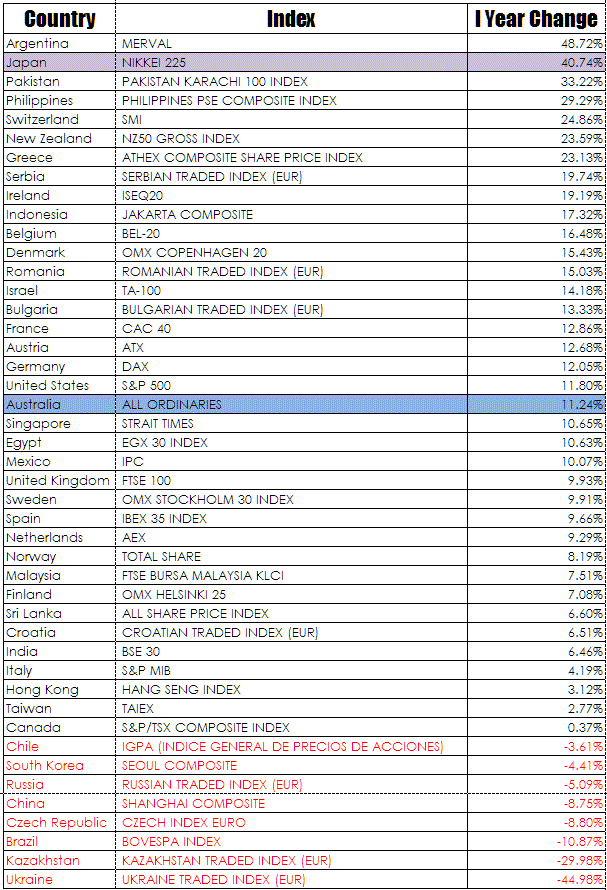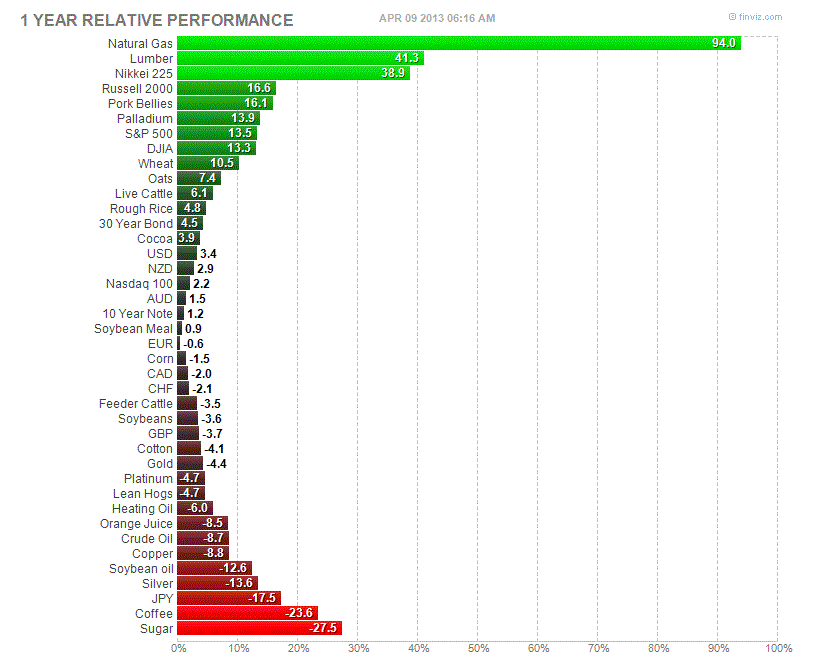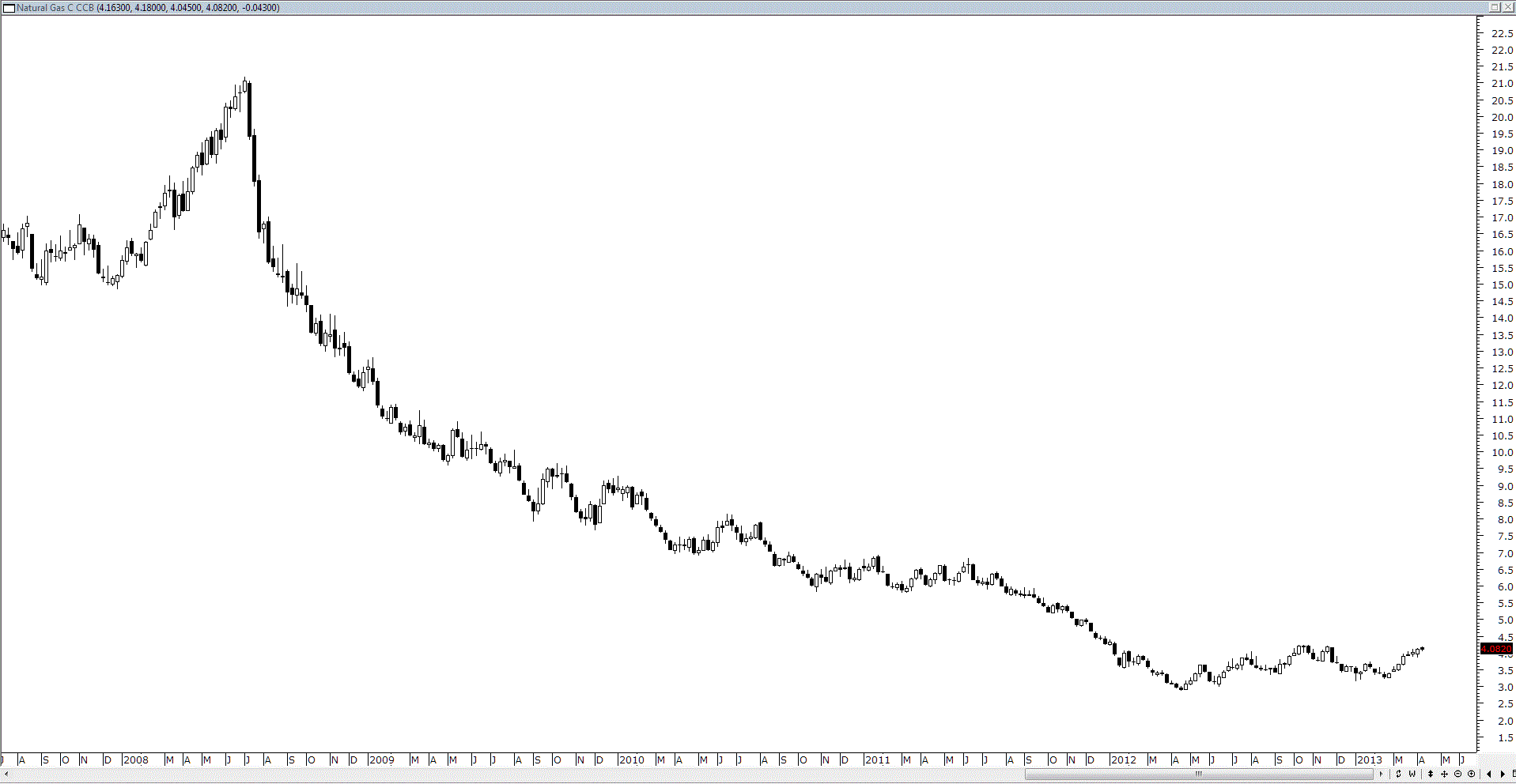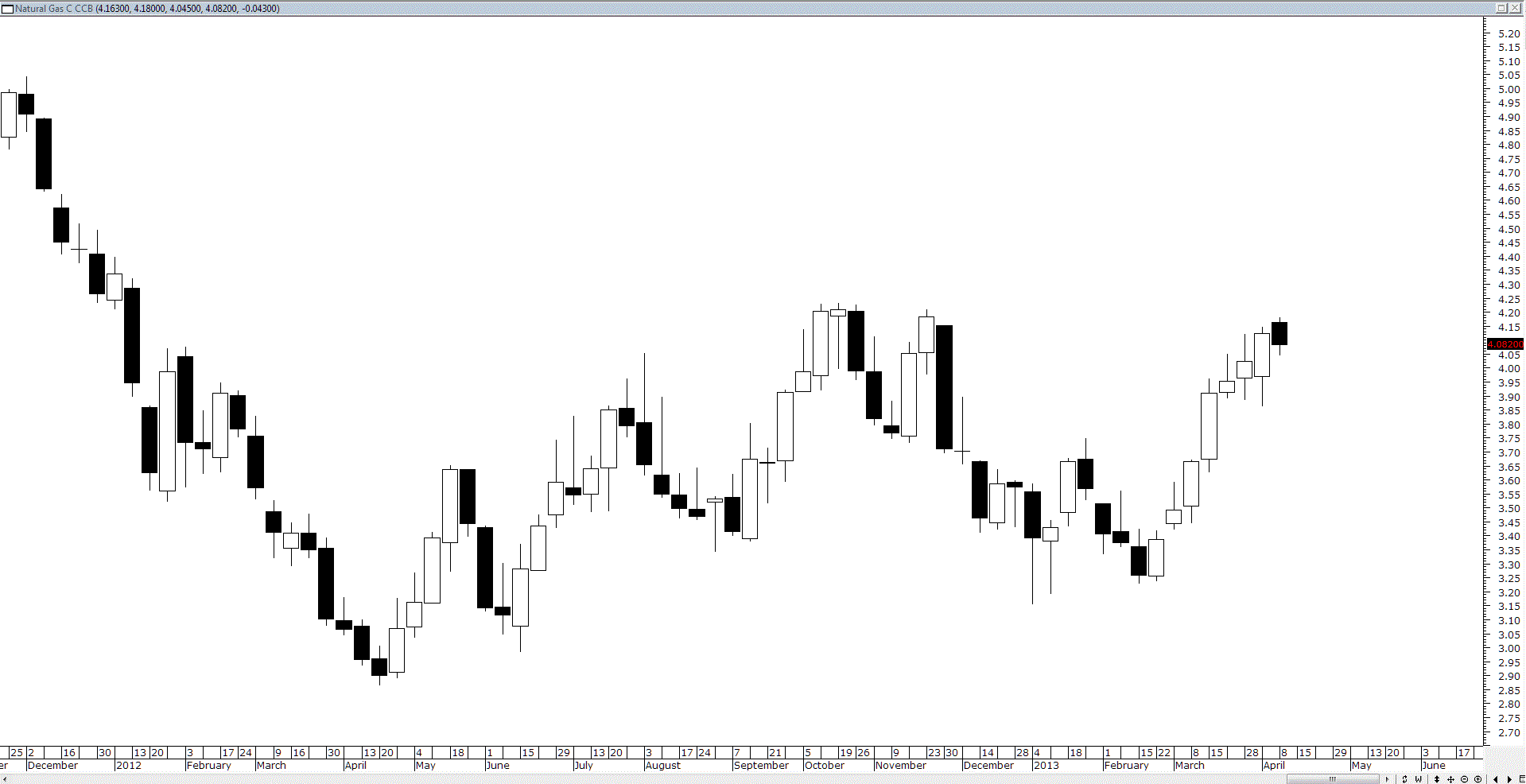Every now and again I tend to review the relative performance of markets to get a sense of what is happening. I also do it to make certain I have not missed something that is glaringly obvious. Such a task is more of an overview hobby because in the world of relative performance not everything is as it seems – particularly from the perspective of a trader.
The table below is the one year performance of a bunch of indices.
 I have highlighted the local market and we sit about mid table – nothing spectacular but also nothing horrific. As a trader you could then ask yourself the question which indices that traditionally make up a traders portfolio did the best in this time frame?
I have highlighted the local market and we sit about mid table – nothing spectacular but also nothing horrific. As a trader you could then ask yourself the question which indices that traditionally make up a traders portfolio did the best in this time frame?
The quick answer is none that you would trade. Positioned in a table such as this one the indexes that make up most traders portfolios dont seem to have had that much movement. Particularly when you consider that the Merval was up 48.7% and the Ukraine Traded Index was down 44.98%. These are clearly much larger movements than the S&P500 with a lift of 11.5%. However, the question is would you want to trade these markets that sit as outliers and from my perspective the answer is no. Of the top performing markets only one is a first world market and that is the Nikkei (apologies to any Kiwis but I dont know anyone who trades that index).
The question also needs ot be asked as to what it the quality of the move. Consider the table below.
 This is a series of commodities data over the same time period and the claer winner is natural gas with 94% lift. However, something interesting happens when you look at the quality of this move.
This is a series of commodities data over the same time period and the claer winner is natural gas with 94% lift. However, something interesting happens when you look at the quality of this move.
The lift of 94% consists of a move off a low into a series of churning highs – something that would be very hard to trade. The numbers at first glance look good but the trading reality is somewhat different particularly when consider against the last move down by natural gas.
 This was about an 86% which is of a lesser magnitude than the recent 94% gain but it was a much more tradeable move.
This was about an 86% which is of a lesser magnitude than the recent 94% gain but it was a much more tradeable move.
As with everything – the numbers are not quite the whole story. Which is almost impossible to tell a financial journalist.





